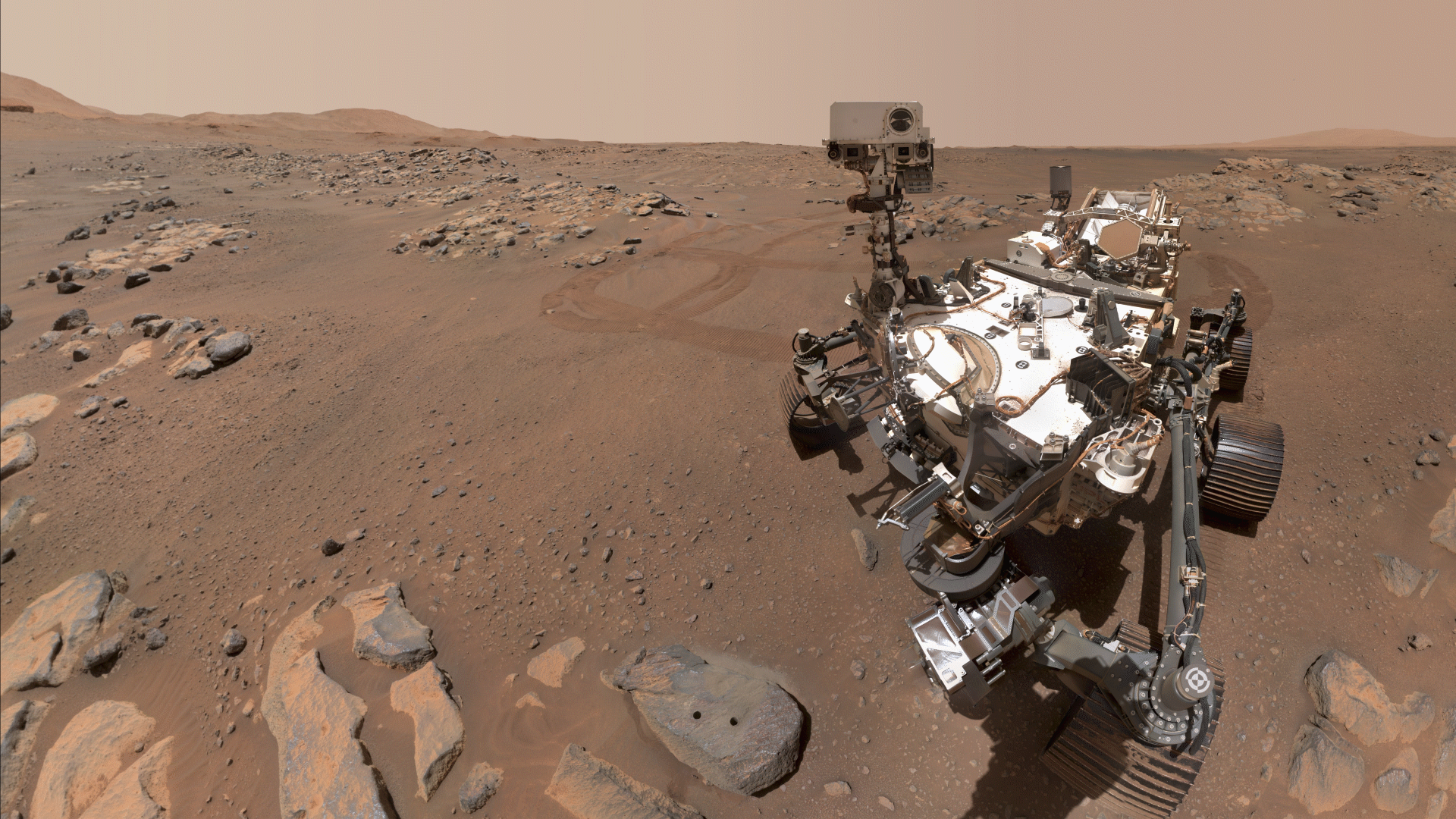
NASA's Mars robots are back up to full speed on and around the Red Planet.
The agency didn't send commands to its Mars explorers from Nov. 10 through Nov. 25, a period when the Red Planet was on the other side of the sun from Earth's perspective.
During such alignments, called Mars solar conjunctions, plasma ejected from the sun's outer atmosphere can interfere with communications between the two planets. So NASA — and other agencies that operate Red Planet robots — temporarily stopped sending commands at these times (which occur every two years or so), lest a corrupted one gets through and causes problems.
Related: NASA's Mars robots are on their own right now — here's why
It's early December now, so Mars has emerged from behind the sun — and the robots are getting back to work.
"Now that conjunction is over, I'm excited to continue #SamplingMars!" members of NASA's Perseverance rover team wrote Monday (Dec. 4) in a post on X (formerly called Twitter).
Perseverance landed inside the Red Planet's Jezero Crater in February 2021. Ever since, it's been hunting for signs of ancient Mars life and, as the above post indicates, collecting samples for future return to Earth.
Get the Space.com Newsletter
Breaking space news, the latest updates on rocket launches, skywatching events and more!
Making the interplanetary journey with Perseverance was Ingenuity, a 4-pound (1.8 kilograms) helicopter tasked with showing that aerial exploration is possible on Mars. Ingenuity did that over the course of five flights in the spring of 2021 and then kept flying, on an extended mission that's seeing it serve as a scout for Perseverance.
Ingenuity didn't wait long after conjunction's end to get back to work.
"Success! Ingenuity completed Flight 67 over the weekend, flying 393 meters (1,289 feet) for more than two minutes. The #MarsHelicopter repositioned itself to get ready for future flights," officials with NASA's Jet Propulsion Laboratory in southern California, which manages Ingenuity's mission, wrote via X on Monday.
Perseverance and Ingenuity aren't the only active NASA Mars craft. The agency's Curiosity rover has been exploring the Red Planet's Gale Crater since August 2012, and three NASA probes are studying Mars from orbit: Odyssey, the Mars Reconnaissance Orbiter and MAVEN (short for "Mars Atmosphere and Volatile Evolution").
Other orbiters are actively studying Mars as well — the European Space Agency's Mars Express and Trace Gas Orbiter, the United Arab Emirates' Hope probe and China's Tianwen-1.
Join our Space Forums to keep talking space on the latest missions, night sky and more! And if you have a news tip, correction or comment, let us know at: community@space.com.

Michael Wall is a Senior Space Writer with Space.com and joined the team in 2010. He primarily covers exoplanets, spaceflight and military space, but has been known to dabble in the space art beat. His book about the search for alien life, "Out There," was published on Nov. 13, 2018. Before becoming a science writer, Michael worked as a herpetologist and wildlife biologist. He has a Ph.D. in evolutionary biology from the University of Sydney, Australia, a bachelor's degree from the University of Arizona, and a graduate certificate in science writing from the University of California, Santa Cruz. To find out what his latest project is, you can follow Michael on Twitter.










